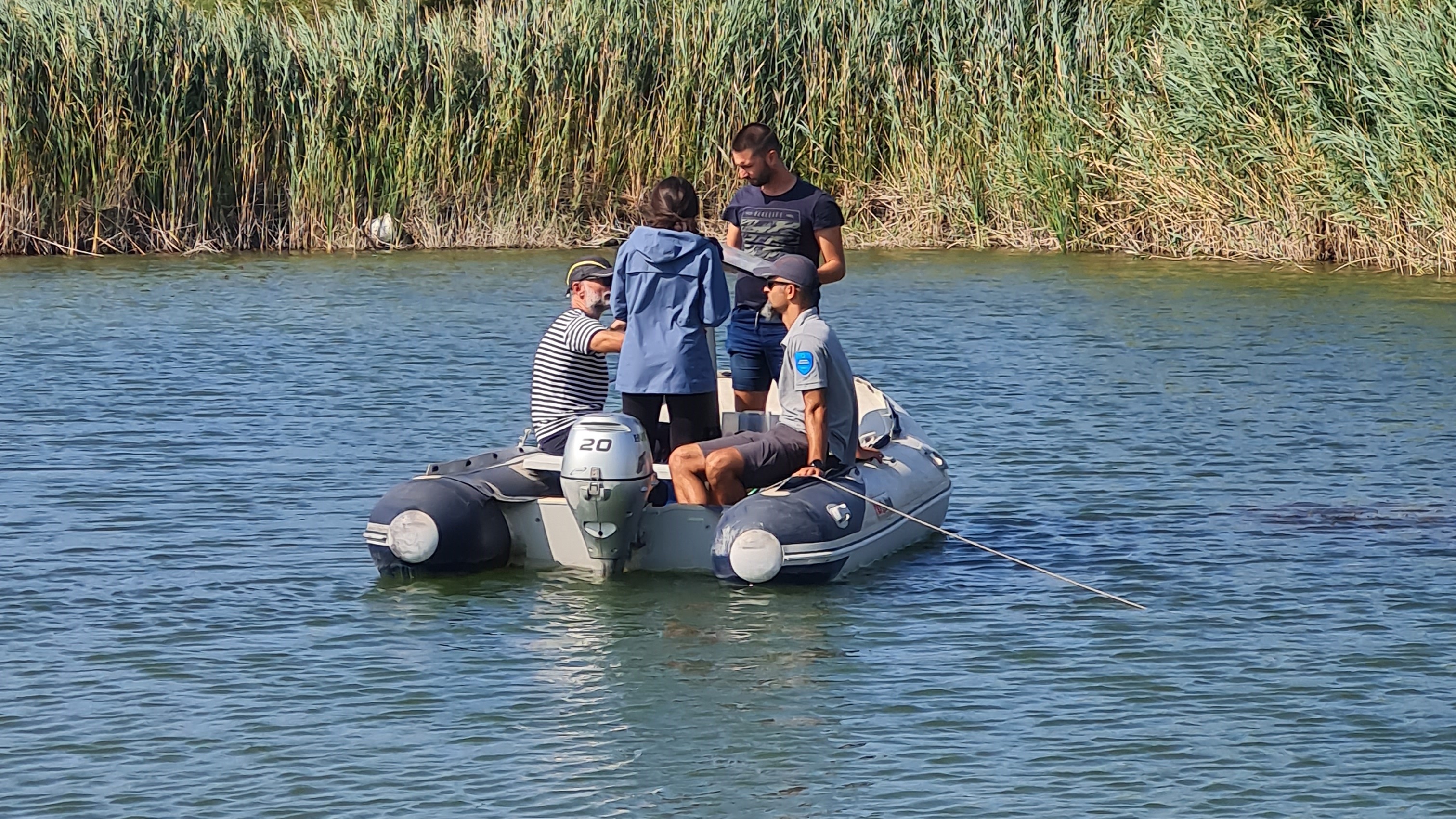The research, published in the respected journal Environmental Microbiome, was carried out by an international team led by Dr Sandi Orlić and Dr Petra Pjevac of the University of Vienna. In collaboration with experts from Germany, Denmark and Croatia, they combined fieldwork with cutting-edge molecular biology techniques to understand what happens beneath the surface. The paper’s first author is Dr Lorena Selak, formerly a PhD candidate in Dr Orlić’s team and now a postdoctoral researcher in Denmark.
“When lake levels fall and seawater begins to infiltrate, it brings salt and marine microbes that are not naturally present in freshwater. This completely alters the geochemistry of the lakebed, which determines the microbial community that in turn dictates whether methane is produced, consumed or released into the atmosphere,” explains Dr Sandi Orlić, Head of the Sedimentation Processes Laboratory at the Ruđer Bošković Institute (IRB). “We wanted to discover exactly what changes occur in those quiet sediment layers—who survives, who disappears, and what the consequences are for the methane cycle,” he adds.
The Quiet World in Balance
To appreciate the story, we must descend into the dark realm beneath the lakebed—into the sediment layer where oxygen is absent but microscopic life thrives. There, millions of microorganisms carry out unseen yet crucial tasks that sustain our planet.
Some microbes break down sugars, others fatty acids or gases. Some produce methane as a by-product of organic matter decomposition; others consume methane, preventing its release into the atmosphere. This degradation chain functions like a perfectly tuned symphony—yet, as in any symphony, one wrong note can throw everything into chaos.
Sulfate: The Invisible Trigger
Because of climate change and reduced rainfall, seawater is encroaching on coastal freshwater systems. It brings not only salt but also sulfates—compounds common in the marine environment but rare in freshwater. Sulfates change the rules of the game by allowing certain bacteria to flourish, displacing existing microbes and shifting the system’s biochemical dynamics.
The researchers found that this change is pivotal—not the salt itself, but the availability of sulfates, which create new ecological niches and allow sulphate-reducing bacteria to proliferate. Some of these bacteria form partnerships with anaerobic methane-oxidisers. However, the efficiency of this new system is not the same.
To determine how microbes respond to salinisation—whether they adapt or are simply replaced—the team sequenced their genomes and analysed so-called osmoregulatory genes, which help cells cope with varying salt concentrations. The results showed no significant genetic differences between freshwater and brackish samples.
In other words, microbes do not develop unique adaptations to increased salinity. Instead, communities rapidly reorganise: some species disappear and are replaced by more tolerant ones. Adaptation occurs at the community level rather than through genetic change.
A Methane Pocket Left Unchecked?
During fieldwork at Lake Vrana, scientists collected sediment samples from various depths, monitored chemical changes, analysed DNA, and measured methane levels. They discovered that in layers infiltrated by seawater a “methane pocket” forms—an area where methane accumulates because no organisms remain to consume it.
“The microbes take on the same roles but in a different geochemical zone. Those present during freshwater conditions tolerated oxygen and used it to oxidise methane. Now, with sulfates available and partners to oxidise methane via sulphate reduction, anaerobic organisms—intolerant of oxygen—become dominant. Consequently, nearer the surface where traces of oxygen might be expected, a methane pocket forms, because the aerobic methanotrophs dislike high salinity, while anaerobic methanotrophs cannot tolerate oxygen,” Dr Orlić explains.
Not all microbes vanished without a fight. Some groups formed new partnerships in an effort to keep methane under control, but their efficiency is diminished. Although they still operate at greater depths, the damage is already done.
“Our natural methane filter starts to fail when we disrupt the balance among key microbial players,” the team warns.
Microbes as Climate Guardians
Unlike visible climate disasters—plastic islands, wildfires, oil spills—this is a process unfolding quietly, without smoke, noise or sensationalism. Yet it can be equally dangerous: a silent erosion of biological processes that have functioned flawlessly for millions of years.
Lake Vrana is therefore more than a local phenomenon. It mirrors a global process occurring in coastal lakes, deltas and wetlands worldwide. The question is no longer whether this will occur, but how quickly and how much methane will escape from these natural reservoirs.
“When we upset the microbial balance, we undermine nature’s ability to lock methane away,” emphasises Dr Sandi Orlić. Methane, if released into the atmosphere, is 25 times more potent than carbon dioxide in terms of its warming effect.
This study highlights the importance of conserving freshwater ecosystems, especially those near coasts, which are increasingly exposed to seawater intrusion due to rising sea levels.
Funding and Acknowledgements
This research was supported by the Croatian Science Foundation projects DOK-2018-09-1550 and IP-2020-02-9021 (MALENA), and by the British Embassy in Zagreb under the project “Insights into microbes involved in the methane cycle can help tackle climate change.” It benefited from substantial logistical and technical support from domestic and international institutions. Special thanks to the management of the Vransko Lake Nature Park for facilitating and supporting the fieldwork.


